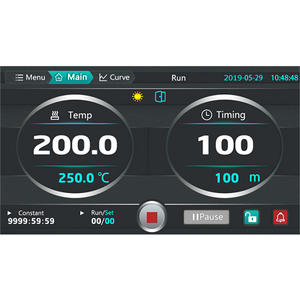Temperature controllers are essential devices in many industries, from manufacturing to food processing. They help maintain a consistent temperature in a given environment, ensuring product quality and safety. But how do temperature controllers work? In this article, we will provide a comprehensive guide to help you understand the inner workings of temperature controllers.

1. What is a temperature controller?
A temperature controller is a device that maintains a set temperature in a given environment. It does this by measuring the actual temperature in the environment and comparing it to the desired temperature. If the actual temperature is too high or too low, the temperature controller will send a signal to a heating or cooling system to adjust the temperature until it reaches the desired level.
2. Types of temperature controllers
There are two main types of temperature controllers: on/off controllers and proportional controllers.
On/off controllers are the simplest type of temperature controller. They work by turning the heating or cooling system on and off as needed to maintain the desired temperature. On/off controllers are suitable for environments where small temperature fluctuations are acceptable, such as in home heating systems.
Proportional controllers, on the other hand, are more sophisticated. They adjust the heating or cooling system gradually, depending on how far the actual temperature is from the desired temperature. Proportional controllers are suitable for environments where precise temperature control is required, such as in laboratory experiments or industrial processes.
3. Components of a temperature controller
A temperature controller consists of several components, including:
Sensor: A sensor measures the actual temperature in the environment and sends a signal to the controller.
Controller: The controller receives the signal from the sensor and compares it to the desired temperature. If the actual temperature is too high or too low, the controller sends a signal to the heating or cooling system to adjust the temperature.
Output device: The output device receives the signal from the controller and adjusts the heating or cooling system accordingly.
4. How does a temperature controller work?
The process of how a temperature controller works can be broken down into several steps:
Step 1: The sensor measures the actual temperature in the environment and sends a signal to the controller.
Step 2: The controller compares the actual temperature to the desired temperature. If the actual temperature is too high or too low, the controller sends a signal to the output device.
Step 3: The output device receives the signal from the controller and adjusts the heating or cooling system accordingly. For example, if the actual temperature is too low, the output device will turn on the heating system to increase the temperature.
Step 4: The sensor continues to measure the actual temperature, and the process repeats until the desired temperature is reached and maintained.
5. Conclusion
Temperature controllers are essential devices in many industries, from manufacturing to food processing. They work by measuring the actual temperature in a given environment and adjusting the heating or cooling system as needed to maintain a consistent temperature. By understanding how temperature controllers work, you can choose the right type of controller for your needs and ensure that your products are of high quality and safe for consumption.